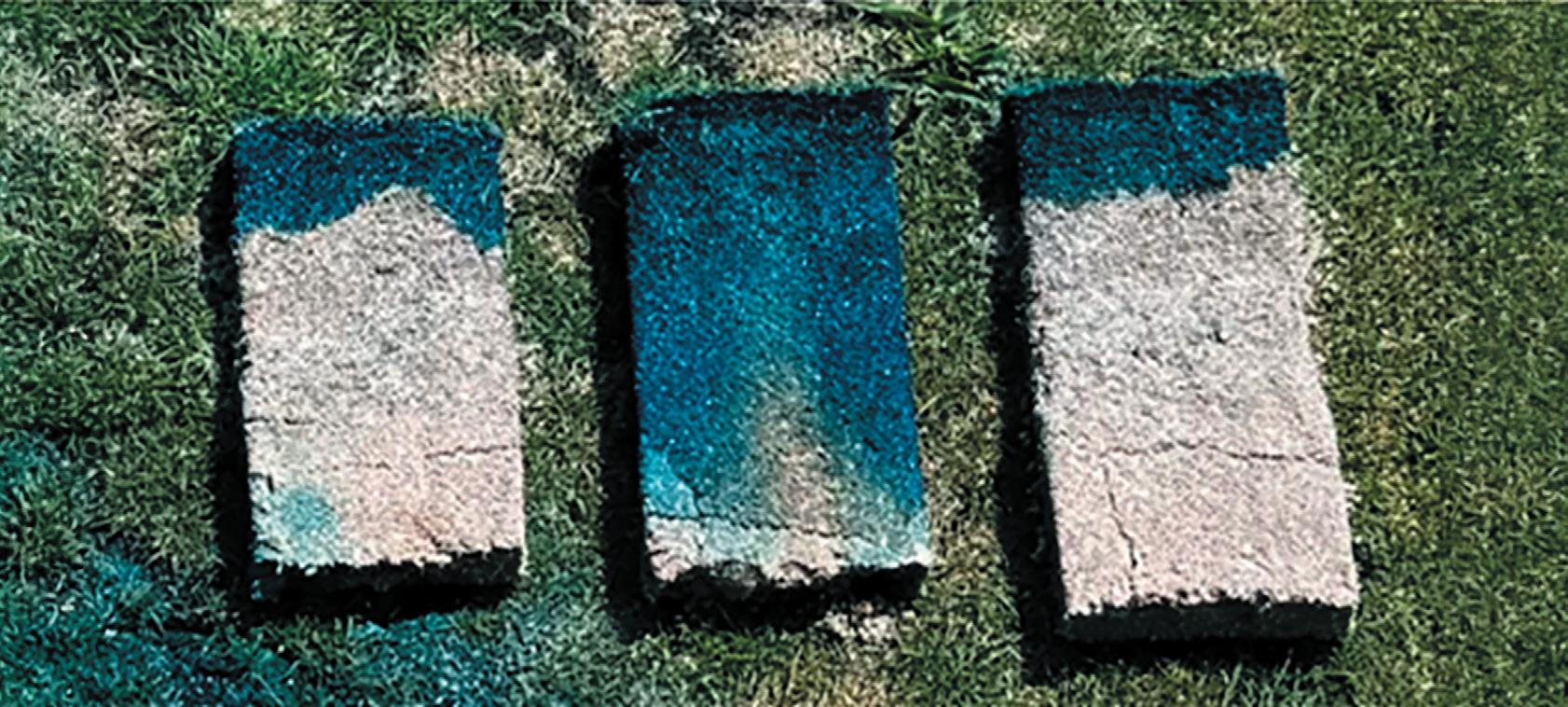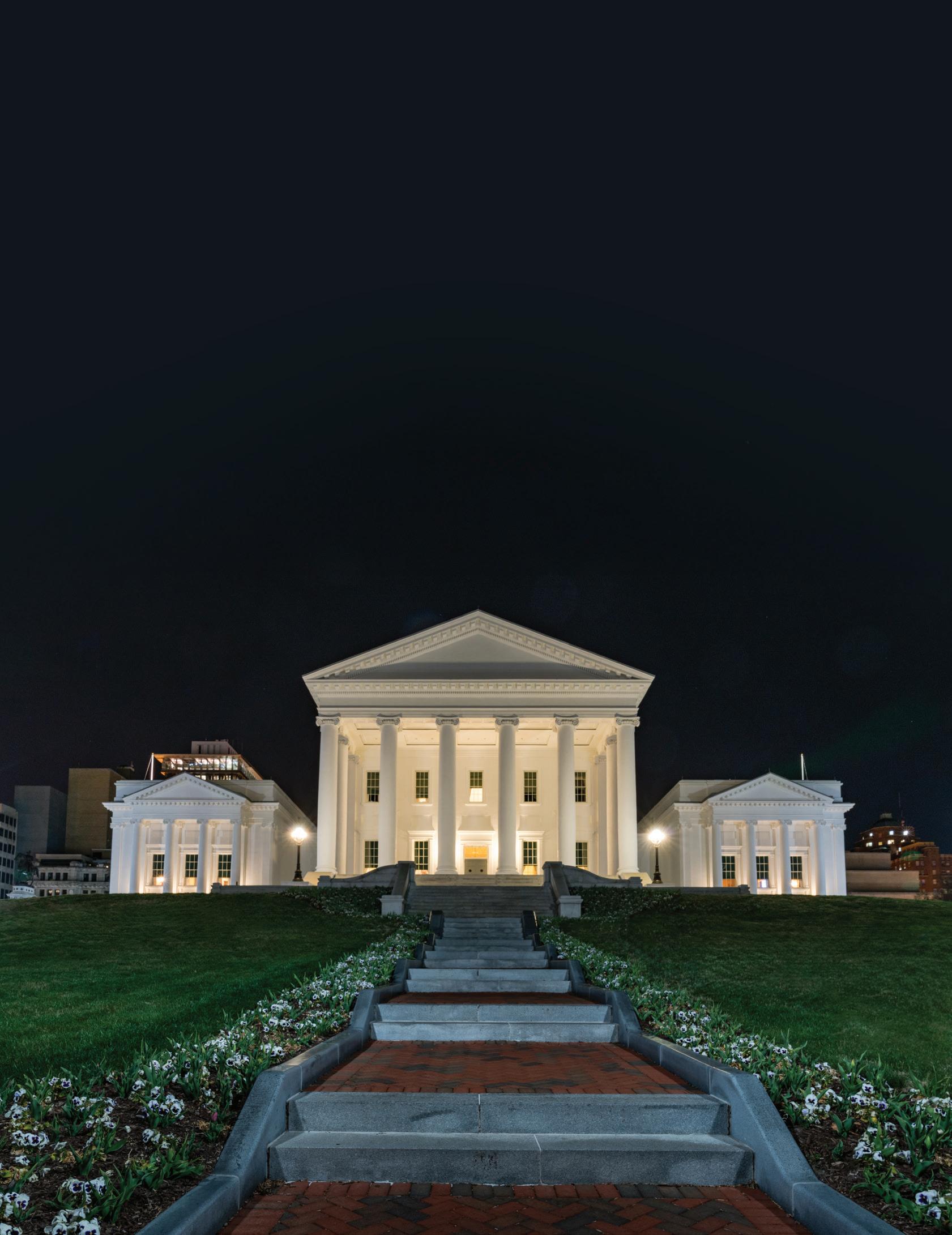

The LEGISLATIVE ISSUE
Protecting the Industry and the Environment: VTC Forges a New Path to Legislative Success
Plus, Pesticide Updates from NALP





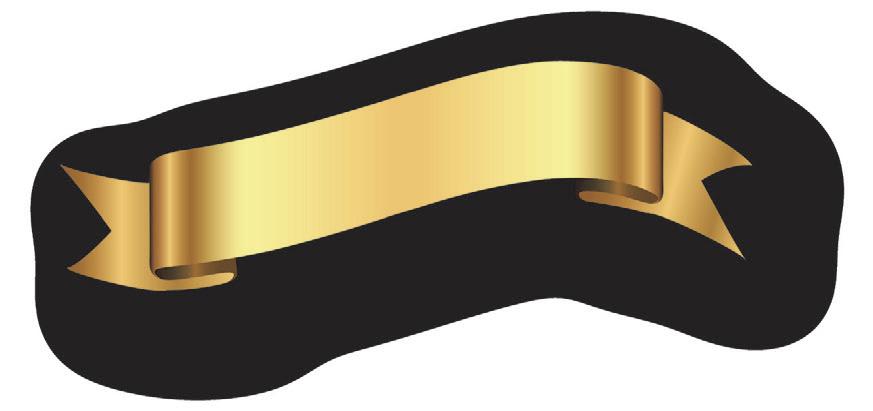


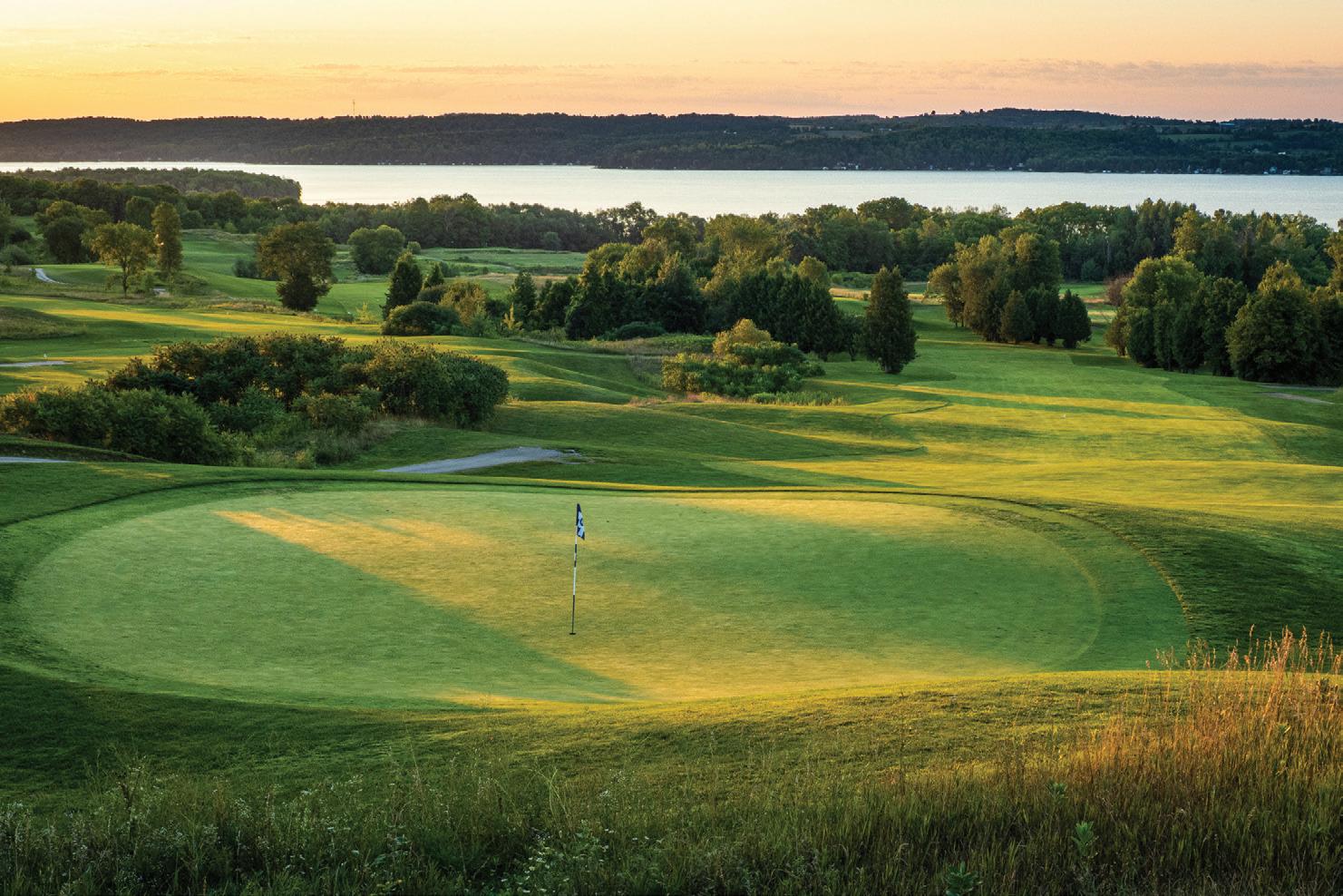









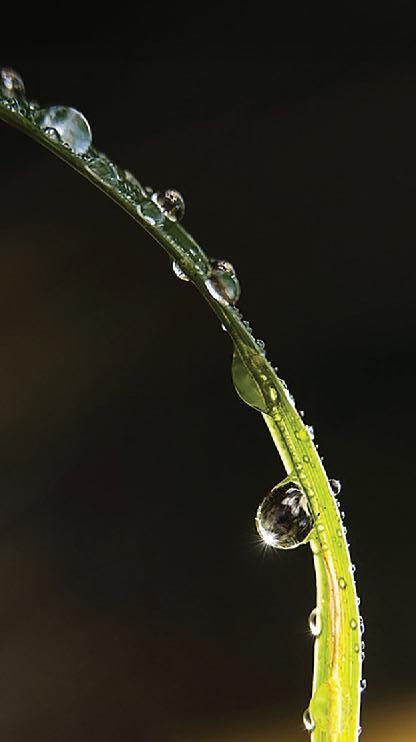
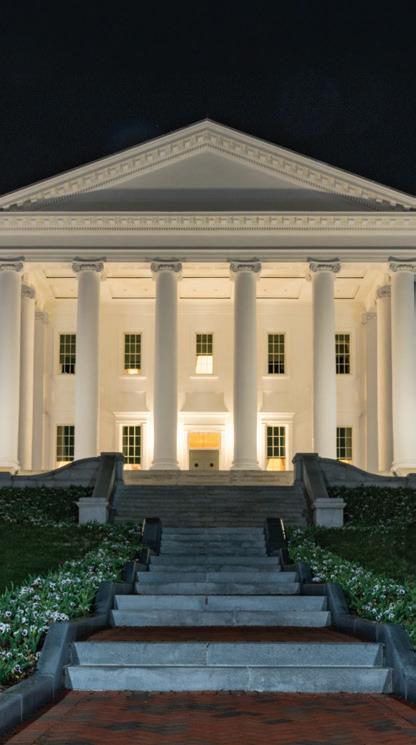
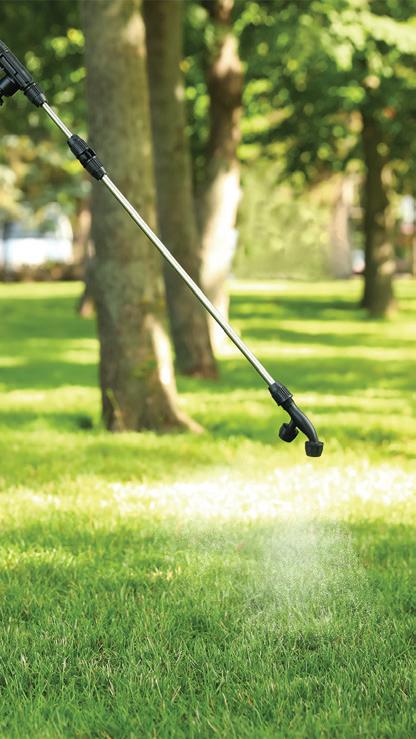
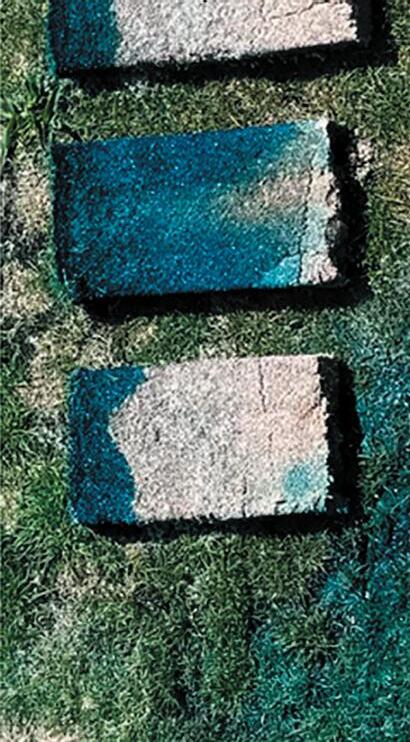

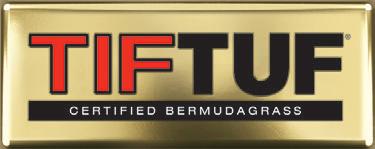
VTC is Vision and Mission Driven
E
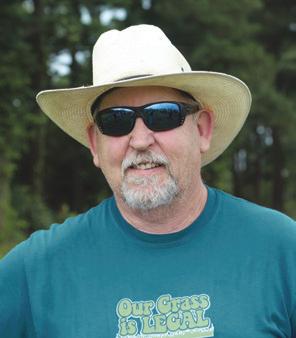
verything we do at the VTC and VTC Environmental Institute is filtered through our Vision and Mission statements.
VISION
“To become the industry leader in political advocacy, certification, education, and environmental stewardship in the lawn and landscape industry’’
MISSION
“To ensure that our members and businesses in the lawn and landscape industry succeed through representation, education, and community outreach’’
To be honest, most of us just want to go to work, go home to our family and enjoy the rewards of our labor. Many never give a thought to laws and regulations that affect our ability to perform the daily duties that make this all possible.
The politics of the Lawn and Landscape industry are an area the VTC pays close attention to. Our industry has many friends in Richmond on both sides of the aisle. We stay engaged and on the lookout for legislation that impacts how our members conduct the business of maintaining Virginia’s lawns and landscapes.
The importance of this vigilance enables the VTC to act quickly when proposed legislation and regulations may ban certain equipment or impose pesticide restrictions. Many times, we see proposed bans with special carve-outs for sod, golf, sports turf, and other specialized segments of the industry.
Several years ago, we initiated the annual Grass Seed Giveaway at the state capitol. Several board members travel to Richmond and distribute bags of grass seed and good will. We also distributed packets of native pollinator seeds. These simple acts serve to let Virginia leaders know who we are (our industry is the second largest agricultural segment in VA) and bring attention to the services we provide daily to protect and enhance the environment through sound industry standards and practices.
In 2024 we realized how important these interactions were to our industry and employed the services of an industry lobbyist, Beck Stanley. Having someone looking out for the lawn and landscape industry was seen as a positive way to work with legislators and keep members informed, engaged, and accomplish the stated goals of the Vision and Mission statements.
Our actions have strengthened relationships and improved perceptions of the industry. To quote Beck, “We have never had to move aggressively to achieve our goals. We have been successful while making strong relationships and building a reputation as an accessible organization representative of all our members.”
The VTC and VTC Environmental Institute will continue to represent our members’ interests and promote all segments of the lawn and landscape industry. You can be part of this ongoing success — contact our Legislative committee and help continue this important work.
Wes Bray
VTC President
Virginia Turfgrass Journal is the official publication of
The Virginia Turfgrass Council P.O. Box 5989
Virginia Beach, VA 23471
Office: (757) 464-1004
Fax: (757) 282-2693
vaturf@verizon.net
PUBLISHED BY Leading Edge Communications, LLC 206 Bridge Street, Suite 200 Franklin, Tennessee 37064 (615) 790-3718
Fax: (615) 794-4524
info@leadingedgecommunications.com
VTC OFFICERS
President Wes Bray Lawns & Gardens Plus (757) 422-2117
Vice President
Harris Wheeler, CTP
Richmond Public Schools (retired) (804) 475-4561
Secretary / Treasurer Ray Funkhouser PBI Gordon (retired)
Past President Phil Bailey, CGCS Isle of Wight County Parks & Recreation (757) 572-1981
VTC DIRECTORS
Sam Burris
Jack Findling
Richard Linsday
Bruce Sheppard
T.J. Skirsky
Craig Zeigler
VTC ADVISORY MEMBERS OF THE BOARD
Mike Goatley, Ph.D. (Chair)
Shawn Askew, Ph.D.
Alejandro Del Pozo-Valdiva, Ph.D.
Jeffrey Derr, Ph.D.
David McCall Ph.D.
Dan Sandor, Ph.D.
Cynthia Smith, Ph.D.
EXECUTIVE DIRECTOR / DIRECTOR OF PROGRAMS
Tom Tracy, Ph.D. (757) 464-1004
VIRGINIA TURFGRASS FOUNDATION
Brandyn Baty (757) 585-3058
BuySod / SodStarPro 7 www.sodstar.com
Green Corp. 23 www.cgcfields.com
Central Sod Farms of Maryland, Inc. 3 www.centralsodmd.com
Revels Tractor Co. Inc. Inside Front Cover www.revelstractor.com
Greene County Fertilizer Co. 23 www.greenecountyfert.com
Home Field Fertilizer / Meadowspring Turf Farm 25 www.meadowspringturf.com Leading
Smith Turf & Irrigation Back Cover www.smithturf.com
The Turf Zone 3, 21 www.theturfzone.com
The Turfgrass Group 5 www.theturfgrassgroup.com
Trimax Mowing Systems 9 www.trimaxmowers.com
Virginia Turfgrass Council (VTC) serves its members in the industry through education, promotion and representation. The statements and opinions expressed herein are those of the individual authors and do not necessarily represent the views of the association, its staff, or its board of directors, Virginia Turfgrass Journal, or its editors. Likewise, the appearance of advertisers, or VTC members, does not constitute an endorsement of the products or services featured in this, past or subsequent issues of this bimonthly publication. Copyright © 2025 by the Virginia Turfgrass Council. Virginia Turfgrass Journal is published bimonthly. Subscriptions are complimentary to members of VTC. POSTMASTER: Send change of address notification to VTC, P.O. Box 5989, Virginia Beach, VA 23471. Postage guaranteed. Thirdclass postage is paid at Jefferson City, MO. Printed in the U.S.A. Reprints and Submissions: Virginia Turfgrass Journal allows reprinting of material published here. Permission requests should be directed to VTC. We are not responsible for unsolicited freelance manuscripts and photographs. Contact the managing editor for contribution information. Advertising: For display and classified advertising rates and insertions, please contact Leading Edge Communications, LLC, 206 Bridge Street, Suite 200, Franklin, TN 370643394, (615) 790-3718, Fax (615) 794-4524. Deadlines are the first of the month prior to the following month’s publication. (Example: August 1 for the September issue.)


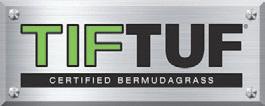
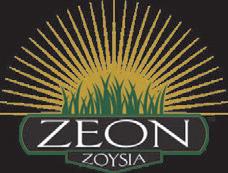
S Passing the Torch
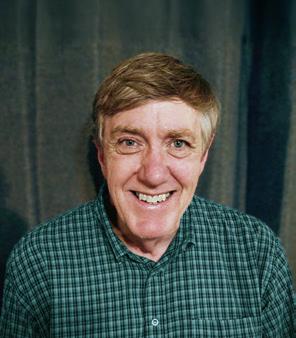
ometimes, you just know when it is time to pass the torch. After 23 years as Executive Director, it is time to turn the reins over to someone who can take the organization to new heights of service. I have seen many changes; have experienced successes and failures; have worked to establish the Environmental Institute; and have established the foundation for growth. Now is the time for someone else to build on that foundation. I will be leaving the VTC on December 31, 2025.
My time with VTC started with a phone call asking me to join the VTC. At that time, the organization had one focus, Virginia’s golf industry. Not a bad focus. That industry is huge and contributes greatly to our state’s economy. Over the years golf superintendents decided they needed an association dedicated to their needs. No one could argue with their logic. The Virginia Golf Course Superintendents Association was born and soared to great heights. I have many friends who are current and former superintendents who saw the value of working with their organization instead of the VTC.
About the same time that the golf superintendents formed the VGCSA, Virginia’s sports turfgrass managers saw a similar need to form an association devoted to their unique challenges. And no wonder. Virginia’s sports field industry was expanding rapidly – that growth continues to this very day. They formed what is now called the Virginia Sports Field Managers Association (VSFMA). Just like their fellow professionals in the golf industry, the sports field managers had an organization dedicated to meet their needs.
We looked around and saw a gaping hole – a segment of Virginia’s green industry that was grossly underserved: lawn and landscape professionals. According to Virginia’s Secretary of Agriculture, the lawn and landscape industry is the largest part of the green industry, contributing vast sums to the economy and employing scores of people in every city and county. The needs of this underserved industry are huge. Regulations against pesticides, fertilizers, and equipment targeted them. Members of the General Assembly, regulatory agencies, municipalities, and powerful environmental groups had negative perceptions of people caring for lawns and landscapes.
In 2020, we formed the Environmental Institute, aggressively pursued a public relations campaign, and conducted service projects across the state. The Result? For the first time ever, former naysayers are now singing our praises. They view us as partners and experts.
The future is very bright. Many opportunities are appearing for the VGSAA, the VSFMA, the VTC, and the VTC Environmental Institute to collaborate, such as a great one at Richmond’s Bellmeade Park.
I am not sure what I will do after December 31, but one thing I do know: I don’t plan on retiring from serving this great industry. I am thankful for the people I have been privileged to work with over the past decades.
Tom Tracy, Ph.D. VTC Executive Director
Shawn D. Askew, Ph.D. Virginia Tech 435 Old Glade Road Blacksburg, VA 24061 540-231-5807 askew@vt.edu
Alejandro Del Pozo-Valdiva, Ph.D. Virginia Tech
Hampton Roads
Agricultural Research Station 1444 Diamond Springs Rd. Virginia Beach, VA 23455 757-363-3900 adelpozo@vt.edu
Jeffrey F. Derr, Ph.D. Virginia Tech
Hampton Roads
Agricultural Research Station 1444 Diamond Springs Rd. Virginia Beach, VA 23455 757-363-3912 jderr@vt.edu
Mike Goatley Jr., Ph.D. Virginia Tech 420 Smyth Hall Blacksburg, VA 24061 540-231-2951 goatley@vt.edu
David McCall, Ph.D. Virginia Tech 435 Old Glade Road Blacksburg, VA 24061 540-231-9598 dsmccall@vt.edu
Dan Sandor, Ph.D. Virginia Tech 170 Drillfield Dr. 411 Price Hall Blacksburg, VA 24061 540-231-9775 dsandor@vt.edu
WITH SUPPORT FROM: Thomas P. Kuhar, Ph.D. Virginia Tech Dept. of Entomology 216 Price Hall 170 Drillfield Drive Blacksburg, VA 24061 540-231-6129 tkuhar@vt.edu

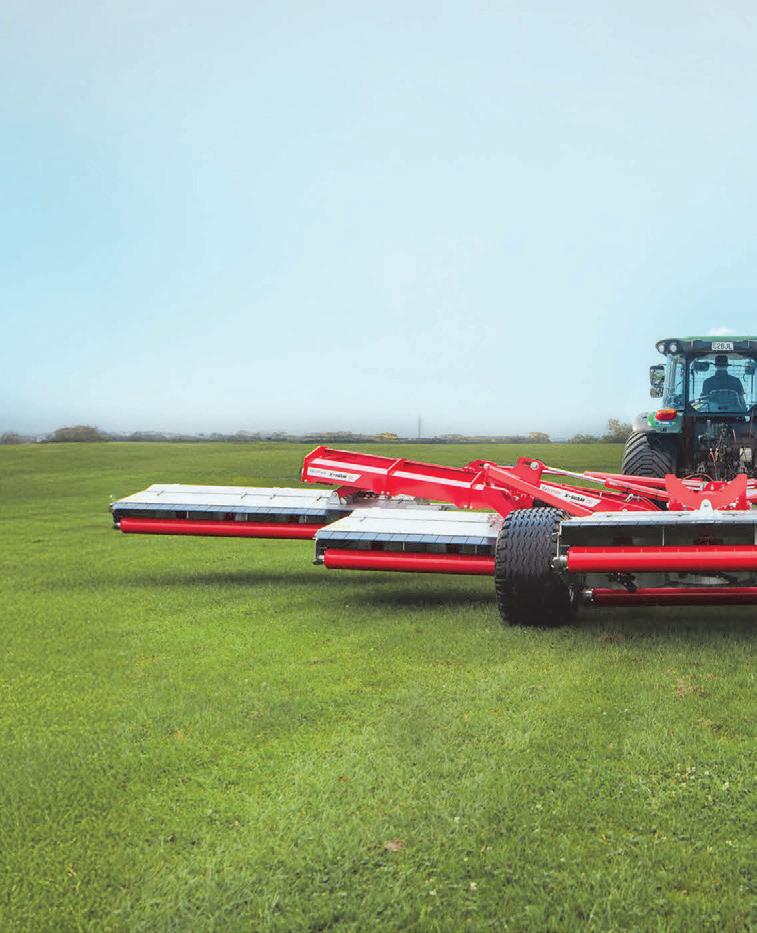



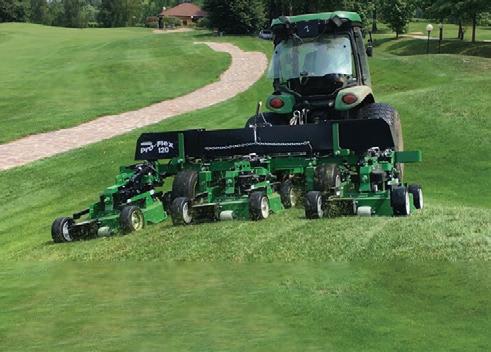
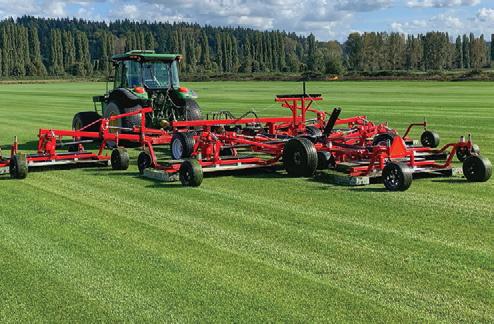

Landscape / Lawn Short Course

Once again, the Lawn and Landscape Short Course will be held at the Belmont Recreation Center during the first week of December on Dec 02, 03, and 04 (Tuesday – Thursday).
SCHEDULE
Tuesday, December 2
9:00 AM – 4:00 PM
Introduction (9:00)
Landscape Realities (9:15)
– Plants for Success – these are plants that have proven themselves in Coastal Virginia; Central Virginia; Institutions and Parks
– Henrico County Public Schools – Great example of combining turfgrass and non turfgrass areas
– Tricks of the Trade
Keeping Your Crew Focused on the Goal Dealing with Temperature Extremes Experiences with battery powered equipment (focus on large mowers)
Lunch (12:00)
Turfgrass Basics (12:45)
Soil Basics (3:00)
End (4:00)
Wednesday, December 3
8:30 AM – 4:00 PM
Transition Zone Challenges / Opportunities (8:30)
Common Landscaping Mistakes (9:30)
Tree Botany and Maintenance OR Tree Installation and Maintenance (10:30)
Lunch (12:00)
Stay Legal
– Virginia Pesticide and Fertilizer Regulations (12:45)
– What can we Expect in Virginia (1:15)
– What is Happening in Other States and in Washington? (1:45)
Success With Trees – Essentials for lawn / landscape professionals (2:30)
End (4:00)
Thursday, December 4
8:30 AM – 2:30 PM
Successful Landscape Design and Implementation (8:30)
Weeds in the Landscape and Lawn (9:30)
Insects in the Landscape and Lawn (10:30)
Lunch (12:00)
Administrative Items (12:45)
Botany. So What? (1:00)
End (2:30)
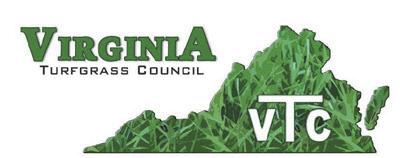
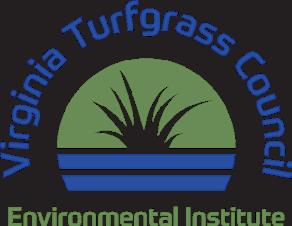
2025 Landscape / Lawn Short Course
DECEMBER 2 – 4 (Tuesday – Thursday) Belmont Recreation Center, 1600 Hilliard Road, Henrico VA 23228
REGISTRATION FORM
The cost: $290 for members of the VTC $350 for non-members of the VTC Join the VTC for $100 (membership good thru December 31, 2026)
ENVIRONMENT: INDUSTRY PROTECTING AND THE THE
VTC Forges a New Path to Legislative Success
By Tom Tracy, Ph.D., VTC Executive Director
The
entire turfgrass and landscape industry is tremendous. It contributes to Virginia’s economy; it improves our quality of life, it protects the environment, and it provides livelihood for hundreds of thousands of hard-working professionals. The industry includes persons responsible for golf courses, sports fields, sod farms and lawns and landscapes. They are a diverse lot united by a love for Virginia’s natural beauty. That love, and its associated desire to protect and enhance the environment, is often not recognized by elected officials, regulatory agencies, and environmental groups. Instead of understanding the economic and environmental importance of the industry, well-meaning decision makers seek to enact laws and regulations based on false assumptions.
About 15 years ago, the false belief that lawn and landscape professionals needlessly and purposely inundate every green blade of grass with tons of fertilizer, especially the Chesapeake Bay, degrading nitrogen and phosphorus elements, led a Virginia State Senator to introduce legislation that would mandate a separate soil test on each property each and every time fertilizer was applied to lawns. Let me repeat: each and every time. I told the Senator that if his bill became law, I was going to quit my job and form a “Q & L C.T.”, standing for Quick and Legal Cheap Testing lab. My hypothetical company’s only function would be to meet the soil testing requirements of the bill. I would be a millionaire within a year.

Fortunately, other members of the General Assembly understood the implications of his bill. They knew that annually requiring five or more soil tests on each property was not only impractical but also that it violated university recommendations of a test about once every three years. These better educated legislators also understood the value of the lawn and landscape industry. Their voices prevailed.
The soil test bill died, and so did my hope of earning a quick million. Later, we worked with legislators, the Virginia Department of Conservation and Natural Resources and Virginia’s Department of Agriculture and Consumer Services to transform the well-intentioned but misguided soil test legislation. The new legislation established the Certified Fertilizer Applicator certification program – a regulation that recognizes the expertise and professionalism of persons who apply fertilizers on lawns.
Professionals in the lawn and landscape industry are frequently singled out by decision makers as the one segment of the turfgrass and landscape industry needing intense scrutiny and regulation. Targeting that industry is extremely short-sighted. Lawn and landscape are the professionals ideally positioned to protect the environment and to provide quality of life for end users being on the front-line of environmental protection. They are the ones daily keeping pesticides and fertilizers out of the Chesapeake Bay and other waters; they are the ones
American Beachgrass planted during a service project at Pleasure House Point.
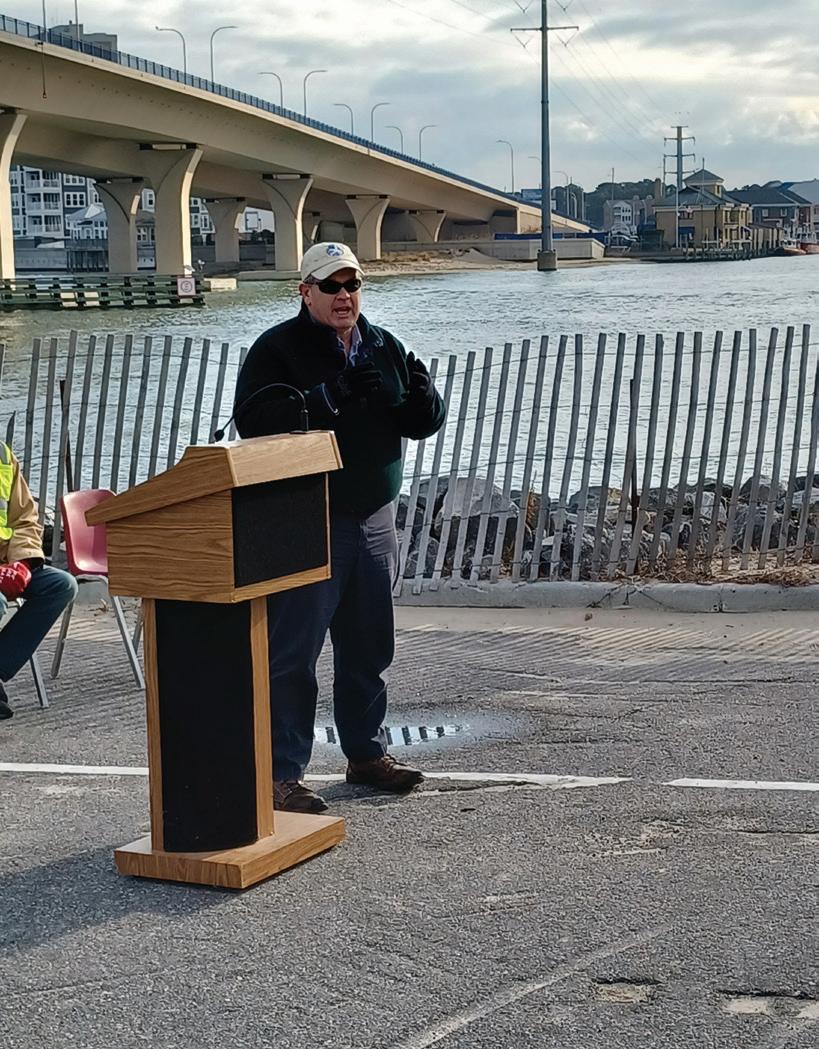
VA Director Chris Moore
who work with the state agencies to establish regulations on the selection and use of those products; they are the ones who have an economic interest in ensuring that excess products are not applied.
Most members of Virginia’s General Assembly now recognize the value, both economically and environmentally, of the lawn and landscape industry. Sadly, misled politicians in other states take an opposite position, viewing these professionals as environmental enemies that must be restricted instead of as powerful allies striving for a common goal.
One does not need look further than Baltimore for an example of anti-industry legislative bias. In 2016, Montgomery County, the jurisdiction that includes Baltimore, enacted a ban on most uses of lawn pesticides, identifying them as being used for “cosmetic” purposes. That regulation has been upheld in multiple court cases and is comparable to similar bans in other states and in Canada. Selective bans, such as the one in Maryland, target the very industry that is ideally suited to protect and enhance the environment. Fortunately, Virginia has so far been spared similar restrictive and misguided legislation.
Opposing anti-industry laws and regulations takes one of two approaches: (1) digging in the heels and fighting whenever possible and (2) intensely educating, both by word and by deeds, persons in the General Assembly and at the regulatory agencies. “Resist”
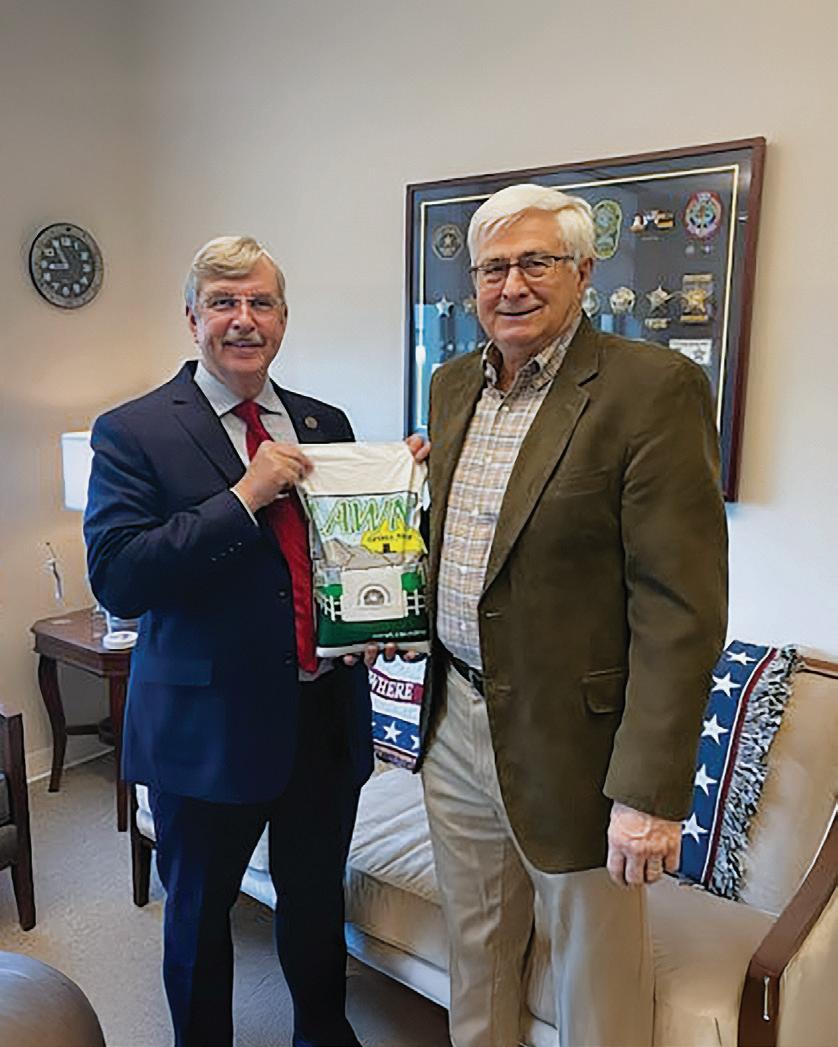
is the proper word for the first approach. “Collaboration” is the term for the second.
Resist can be very effective for stopping specific pieces of legislation. We use this strategy sparingly because industries who are always perceived as “in opposition” to legislation often face negative consequences, even when said legislation is introduced by well-meaning but misinformed politicians. Industry professionals become labeled as enemies who oppose every action that seeks to protect the environment. Resist when necessary, but there is a better approach.
We are learning from experience and from the broader culture that our approach must be intentional, measured, and targeted to specific pieces of legislation. Use RESIST when we must but ALWAYS use the second strategy: COLLABORATION.
The second strategy, one of education, building bridges, and developing strategic partnerships is hard – it takes more time and uses far more resources than simply always saying no whenever undesirable legislation appears. The results are worth expending those resources, because when done properly and consistently, taking the collaborative approach secures powerful allies among legislators and environmental groups. Wes Bray, Virginia Turfgrass Council President, said it was not too long ago that legislators and environmental group leaders used to “loathe our industry. Now they view us as valuable partners.”
Bruce Sheppard (Board Member) meeting a member of the General Assembly
Chesapeake Bay Foundation
We have three main on-going collaboration initiatives: conducting Service Projects, partnering with environmental groups, and distributing turf and flowering wildflower seeds. Service Projects are highly visible “boots on the ground” events. They are practical, they involve work, and they demonstrate our commitment to environmental protection. We have conducted these projects in various parts of the state and in various environmentally sensitive areas. From Manassas to Virginia Beach and from planting shade trees at a public library to minimizing erosion at the oceanfront, these highly visible projects gained were noticed by persons and organizations previously unaware of the scope of the industry.
Developing partnerships with non-turfgrass persons and entities is always an integral part of each Service Project. We worked with the Chesapeake Bay Foundation to restore a bioswale and establish erosion controlling beach grass; the City of Virginia Beach Public Schools and the Virginia Aquarium joined us in enhancing outdoor displays and minimizing tidal erosion; the City of Petersburg assisted us on a project that prevented silt from entering the James River; and Prince William County officials were instrumental in a project that installed shade trees and a bog garden at Manassas Central Library.
Our work with environmental groups has been very rewarding, turning potentially adversarial associations into powerful allies for the environment. Relationships with these groups became very positive when their leaders participated in our Service Projects, when they spoke at our events, and when they realized a very important fact: The lawn and landscape industry seeks a “both/and” approach, not an “either/or” one. Recognizing the former approach, one environmental group leader became a very avid supporter of us when she realized industry professionals recognize the value of using the best plants for the site and
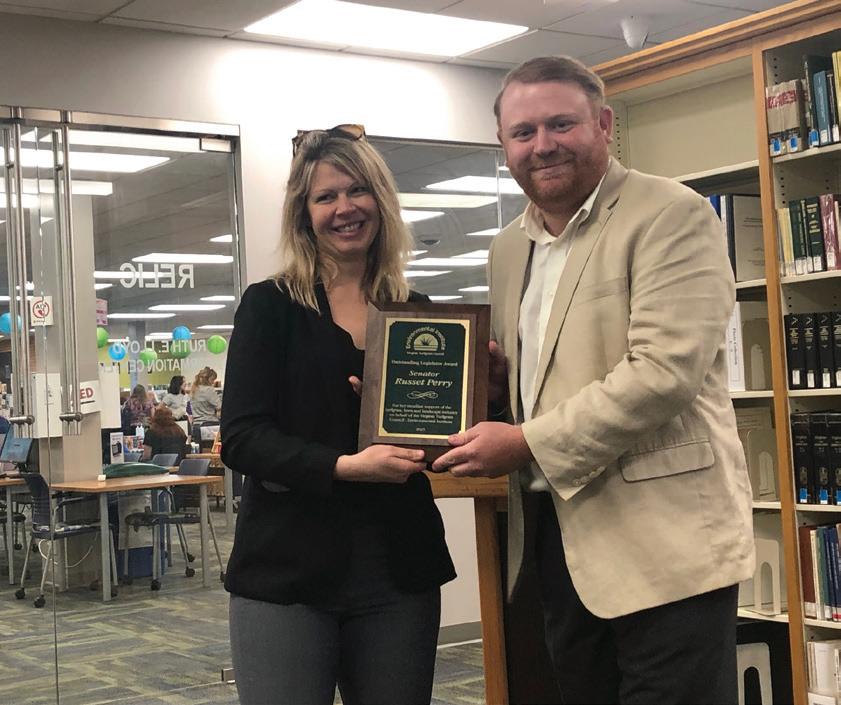
for the intended use. Previously, she thought we always pushed for establishing extensive lawns on every inch of every property. Another environmental group leader, an educator with The Elizabeth River Project (ERP), a powerful and effective group headquartered in Norfolk, Virginia, told me she publicly corrected a speaker from another group who publicly disparaged the entire lawn and landscape industry. Such support is invaluable and was the result of years of developing relationships with her and with the ERP. We exhibited at their events. We invited them to speak at our pesticide and fertilizer programs. We listened to each other.
“I wondered when you folks were coming,” is frequently heard during our annual seed distribution at Virginia’s General Assembly. Three-pound bags of quality fescue grass and packs of flowering wildflower seeds are enthusiastically accepted – even those senators and delegates with reservations about the lawn and landscape industry eagerly accept our gift of lawns and flowers. Along with seeds, each office in the General Assembly building gets literature about our industry’s value.
Turfgrass industry professionals are also taking note of the VTC and VTC-EI’s successes in the legislative arena. Julie Holt, Content Director for TheTurfZone.com, says, “VTC’s approach to legislative advocacy and partnership is unique in the industry association space. In my work with turfgrass and nursery and landscape organizations in the eastern U.S., VTC’s focus on service projects and building goodwill with legislators and environmental groups stands alone, especially in the lawn and landscape segment. It is encouraging to see individuals who may have negative perceptions of managed turfgrass begin to understand that lawn and landscape professionals are actually quite diligent in their care for and protection of the environment.”
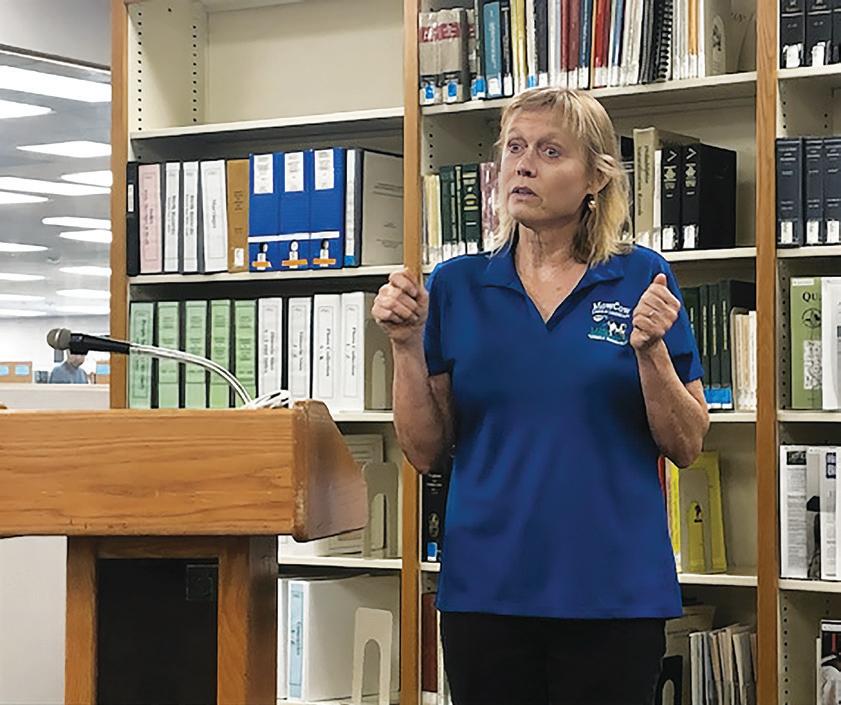
Dr. Cindy Smith, VTC Advisor, speaking during a service project at Manassas Central Library in Prince William County.
Beck Stanley, VTC Legislative Consultant, presenting the Virginia Turfgrass Council Environmental Institute Outstanding Legislator award to Senator Perry.


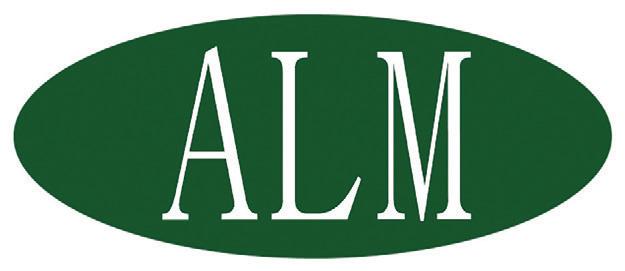
Henrico County Public Schools recently asked for our help in establishing pollinator meadows in areas unsuitable for turfgrass.
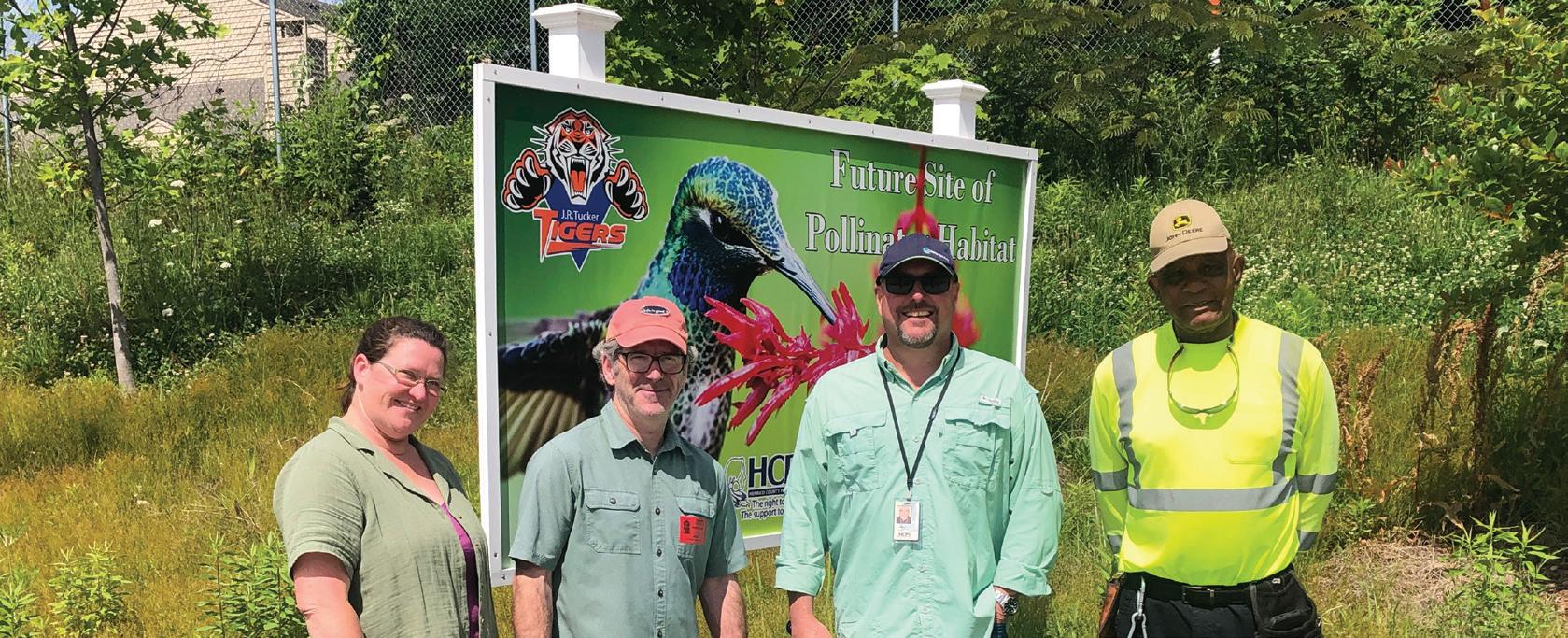
Much of our positive outreach is through the Virginia Turfgrass Council Environmental Institute (VTC-EI), a 501 (c)3 corporation. The Environmental Institute has two main goals: (1) educate decision makers, primarily politicians and regulators, about the value of our industry and (2) partner with environmental groups. Working towards those goals enables us to effectively advocate for the lawn and landscape industry. Non-industry persons now recognize we are on the front line of environmental protection. The accomplishments listed above detail fulfillment of those goals. But to really appreciate our work it is necessary to examine the relationships and our next steps.
I frequently say to our non-green industry partners that we disagree about many issues, but we are on the same page when it comes to protecting the environment. Political labels retreat to irrelevance when we advocate for or against legislation that adversely affects the industry’s ability to accomplish that goal of protection. We now have dear friends and supporters in the General Assembly who are both politically liberal and conservative. We also have dear friends and supporters at various universities – for instance, Dr. Cindy Smith, Professor of Environmental Science & Policy at George Mason University, is on our Board of Advisors. She is also the person who facilitated the Prince William County Service Project. She also helped present our first ever Environmental Institute Outstanding Legislator award to Senator Russet Perry. In addition to George Mason University’s Dr. Smith, we are developing relationships with Virginia State University. Soon, we will be able to publicly discuss the great partnerships we will have with that institution.
What does the future hold? Of course, we will continue working with our great friends at Virginia Tech, but we are increasing the depth of our university resources to include other universities. We will continue developing partnerships with environmental groups. Doing so is not only right but is also very strategic. These groups are, rightly so, highly respected both in the General Assembly and in cities and counties. Their proclamation of the excellencies of the lawn and landscape industry is priceless.
The immediate future includes working with Henrico County Public Schools and the City of Richmond. The schools contacted us to help them establish pollinator meadows in areas unsuitable for turfgrass. How many schools are they talking about? 135.
Harris Wheeler, VTC Vice President, was recently approached by City of Richmond officials to consider programs and projects that will help underserved residents of that city. They recognized his great work with housing projects and Belmeade Park and are seeking ways to expand his efforts to help underserved populations in the city.
In closing, please heed my admonition for industry professionals to continue doing the right thing. Proper use of pesticides and fertilizers protects the applicator, others, and the environment. That usage also protects us from adverse legislation. Four years ago, House Bill 2030 sought to prevent our industry from using an entire class of pesticides. The bill’s patron had good intentions, but those intentions were based on false information: he believed landscaper’s use of those pesticides destroyed bee hives in his district. Detailed research by the Virginia Department of Agriculture and Consumer Services exonerated the industry because those bee hives were destroyed by homeowners who misused pesticides. I shudder to think what would have happened if the research discovered the industry was to blame.
Please, always do the right thing. And do the right thing over and over again.
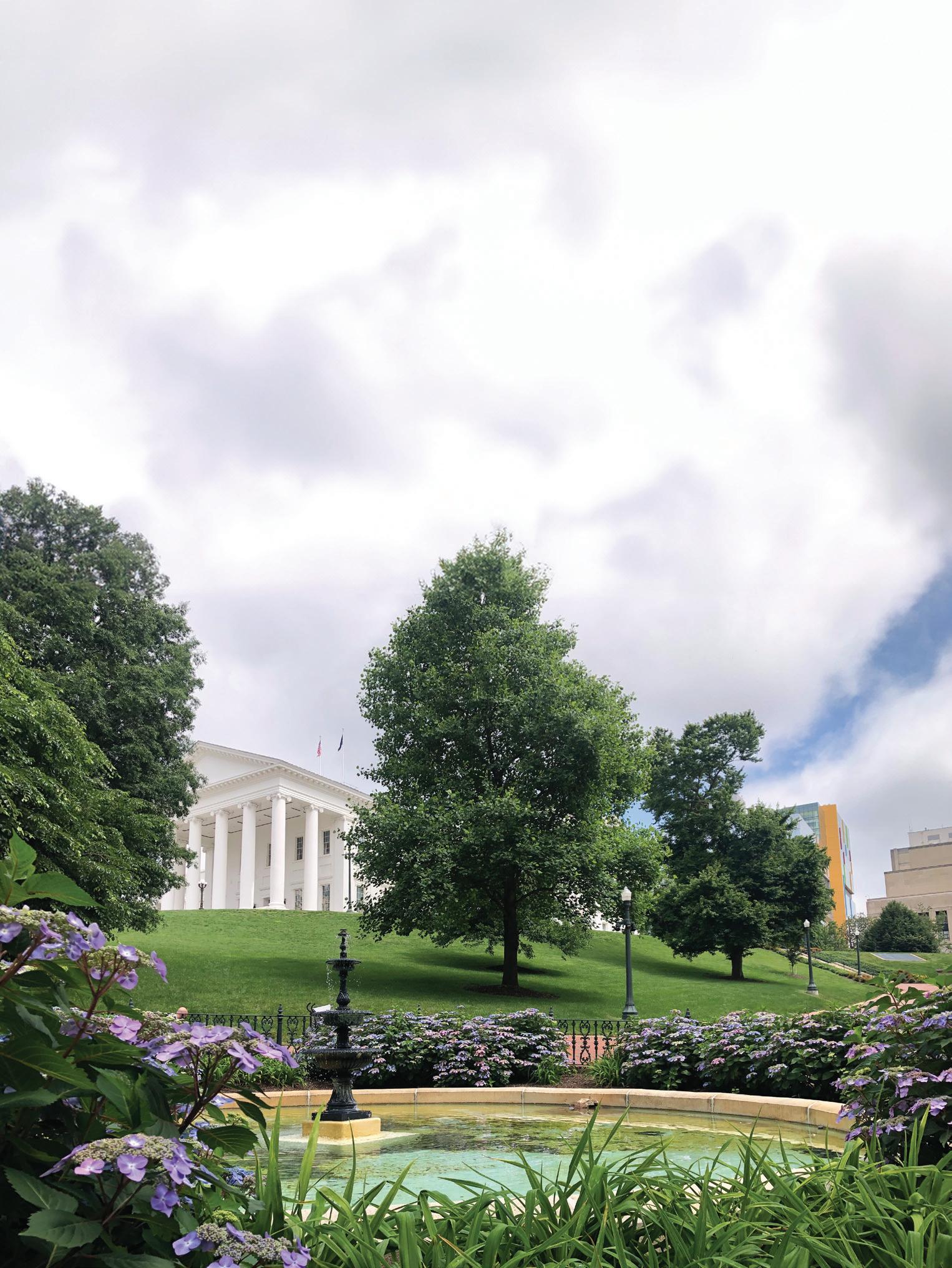
Virginia Turfgrass Council – Environmental Institute is a 501(c)(3) Corporation focused on building a bridge between the Green Industry and Environmental groups.
With YOUR support, VTC-EI can continue in its work in service projects, legislative advocacy and building goodwill.
To learn more about VTC-EI and to get involved, please contact us at virginiaturf@gmail.com
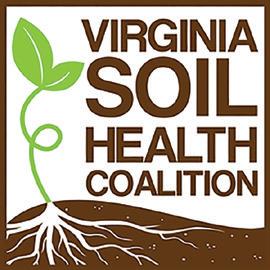
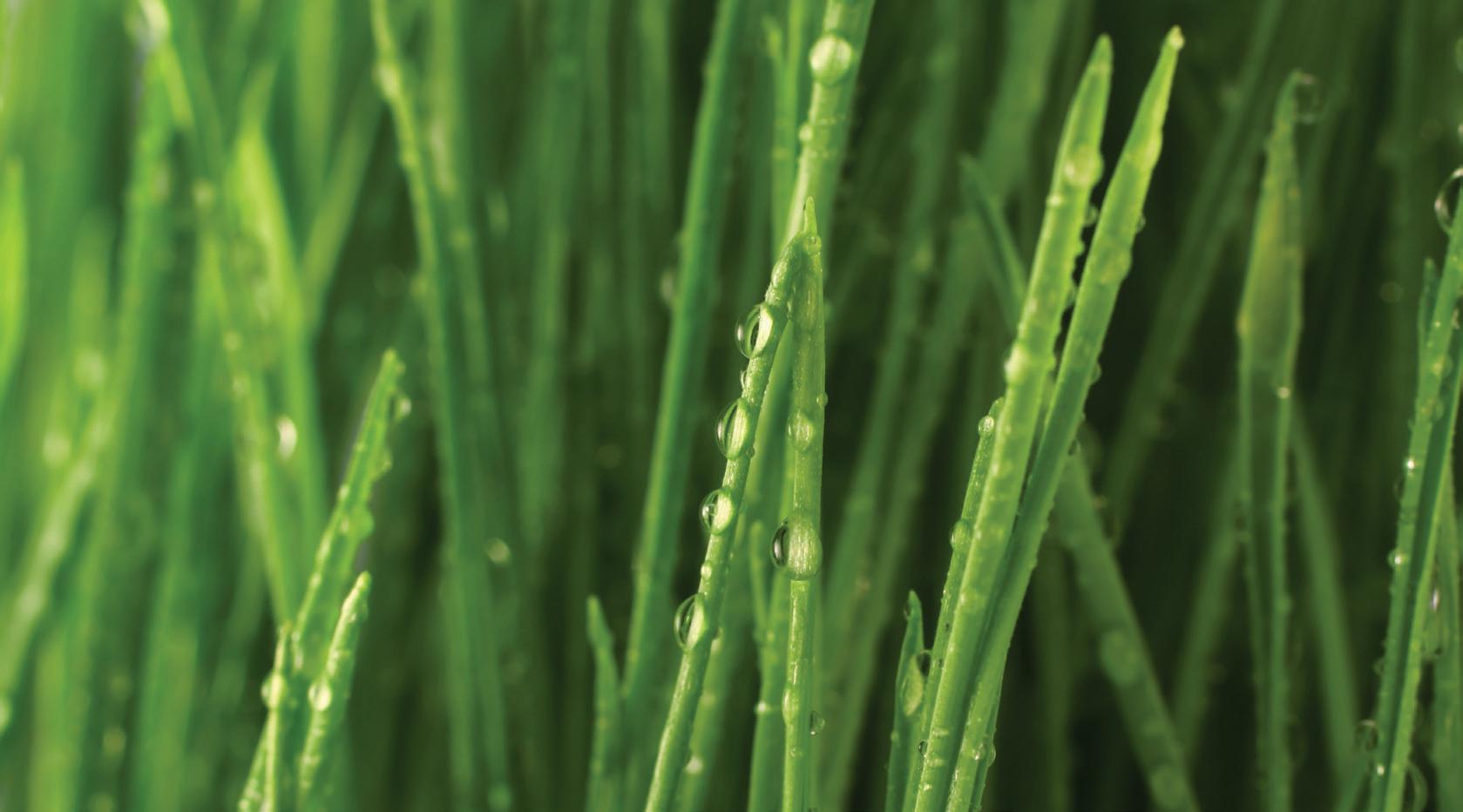
THE TURFGRASS TRIFECTA:
Winning on Three Fronts
By Greg Hammer, Soil Health Coalition
Let’s be honest, managing turfgrass isn’t always a walk in the park (pun intended!). It is a delicate balancing act, juggling aesthetics, functionality, budgets, time, and of course, the ever-changing weather. But what if I told you there is a secret to achieving a win-win-win turfgrass trifecta?
What is the turfgrass trifecta? It is a win for the homeowner (or turf manager), a win for the soil and environment, and a win for the hardworking crews who make it all happen. We know happy crews mean happy turf, and happy turf means happy clients.
Not everyone’s turfgrass goals are identical. Some folks aspire to a perfectly manicured, emerald-green monoculture (think Augusta National, but on a slightly smaller scale). Others prioritize functionality – a safe and durable surface for athletes or a lush carpet for backyard barbecues. And we can’t forget the budgetconscious, aiming for the most cost-effective maintenance plan.
Regardless of individual goals, we have a responsibility to incorporate sound environmental practices. As the experts, you’re in a prime position to coach your clients, guiding them towards management decisions that benefit the turf, the environment, and can reduce your operation costs. So, what are a couple strategies you can do to achieve this win-win-win?
Clippings: The Unsung Heroes of Turfgrass Management
Picture this: bags upon bags of grass clippings destined for the landfill. These green goldmines are packed with nutrients and organic matter, just waiting to be recycled back into the soil.
Clippings act as a natural mulch, reducing runoff, suppressing weeds, and adding organic matter, improving soil structure and water retention. As a result, there is less need for irrigation, fertilization, and the need to haul clippings away. A win-win-win!
Soil Tests: The Turfgrass Whisperers
Soil tests can be a secret weapon, the Rosetta Stone, of turfgrass management. Without a soil test, you’re just guessing – and guessing is rarely a winning strategy.
A soil test provides a snapshot of your soil’s current condition, revealing vital information like pH, nutrient levels, and organic matter content. This data-driven approach allows for precise fertilizer applications, preventing over-fertilization (and the resulting nutrient runoff that pollutes our waterways). Want to take it a step further? Consider using organic fertilizers like compost and manure to boost soil health and provide a slow release of nutrients. Another win-win-win!
These are just a couple of simple strategies to improve soil health, reduce costs, and protect the environment. But we want to hear from you! What are your go-to turfgrass management tips for achieving the trifecta? Share your wisdom by submitting your ideas to msketch2@vt.edu.

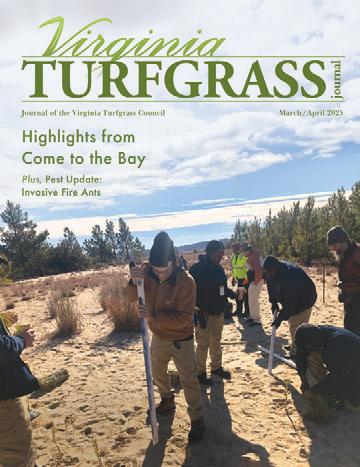
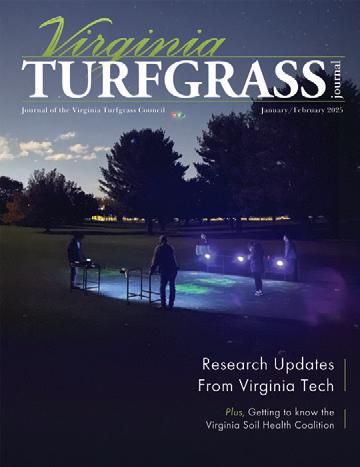
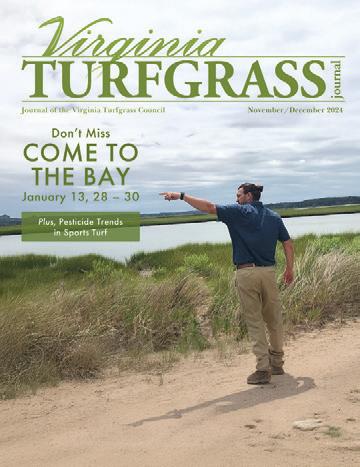
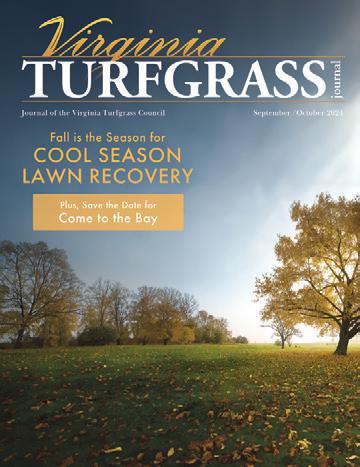
PESTICIDE UPDATE from NALP
By Bob Mann N.A.L.P Director of State and Local Government Relations

live in interesting times, don’t we? On the one hand, there are environmental groups pushing initiatives to remove lawns from the American landscape altogether; simultaneously, federal regulators seeking to prevent pesticides from escaping agricultural fields are encouraging farmers to install buffer strips consisting of perennial, maintained groundcovers (otherwise known as a lawn). Similarly, we have people saying lawns use too much fertilizer, water, and pesticides, yet turfgrass breeders are churning out cultivars that look stunning with little to no inputs at all. It is in this policy space filled with incongruity, contradiction, and misinformation that we find ourselves today. In light of this, let’s review two of the most pressing pesticide-related issues facing the green industry today.
The Endangered Species Act & Pesticides
As turfgrass managers, we are always striving to reduce inputs; inputs are expensive and to the extent we can maximize turfgrass performance without them, those savings drop to the bottom line and into our back pockets. But if your golf green disappears overnight due to an outbreak of Pythium blight or your customer’s lawn is highlighter yellow because it’s been overtaken by crabgrass, you’ll soon be selling hotdogs at Nationals Park instead of growing grass for a living. Pesticides are an indispensable tool if you’re in the turfgrass management business.
Most turfgrass managers will recognize the acronym FIFRA as the federal law that governs pesticides, but it’s not the only one and may not even be the most important. Passed into law at roughly the same time as FIFRA, the federal Endangered Species Act (ESA) might not seem to have anything to do with pesticides. But buried deep in the fine print of the ESA is a requirement that any government action that could adversely affect a threatened or endangered species, or its habitat, must be evaluated by either the U.S. Fish & Wildlife Service or the National Marine Fisheries Service (together referred to as ‘The Services’). The registration of pesticides is a government action and there can be no argument that pesticides have the potential to adversely affect endangered species. The problem is that doing a biological evaluation of an individual pesticide is enormously complex and expensive. Despite numerous well-intentioned stops and starts over the past half century to comply with this requirement, the EPA has to date only completed ESA assessments of ten percent of the pesticides on the market.
Environmental groups successfully sued EPA for their noncompliance resulting in court orders requiring the agency to get their act together and quickly. This resulted in a novel approach to solving the problem by grouping pesticides together by type (herbicides, insecticides, etc.) and essentially doing the nuts and bolts of what the Services do in their biological opinion work for them but doing it en masse.
linkedin.com/company/theturfzone

x.com/theturfzone
What this means for you as a turfgrass manager is that label directions will slowly change as new products are introduced and existing products are re-registered. You will be required to check for the presence of endangered species at the location of the pesticide application and follow specific directions to protect them. These protections focus on reducing drift, runoff, and erosion. If this sounds familiar to you it’s because we in the turfgrass industry have been eliminating off-target effects of pesticides for a long time. If our spray applications drift, for instance, we kill our customer’s ornamental plants. That is why we use low pressure spray systems and nozzles that develop large droplets to mitigate drift.
NALP has been working alongside other industry groups in the non-agricultural pesticide user space to educate federal regulators on how we use the pesticides that they register and the stewardship we employ to ensure that they stay where they’re supposed to be. As the first proposed labels are being released for comments by the EPA, we are encouraged that complying with these new requirements will not be a heavy lift for us, certainly not as onerous as we feared at the beginning of this process.
Preemption: Or, Who Gets to Make the Rules?
The doctrine of preemption states that laws at higher levels of government supersede those at lower ones, meaning that a city can’t pass a law or enact a regulation that is at odds with those at the federal or state level. This explains why you have a state driver’s license and not a local one as states preempt localities from issuing licenses of their own. The rationale behind this doctrine is simple enough. Some issues have broad implications that cannot be settled at the local level lest we have a confusing array
of contradictory regulations that make it impossible to comply with them all.
Such is the case with pesticides. When FIFRA was amended in 1972 there was an unresolved question in Congress as to whether cities and towns should be able to engage in the regulation of pesticides. It was not until nearly two decades later that a Supreme Court decision, Wisconsin Public Intervenor v. Mortier, exposed that unresolved question. The court’s decision meant that every one of the 90,000 jurisdictions in the United States was free to regulate pesticides right along with the EPA.
To suggest that Mortier sent shockwaves through the green industry would be an understatement. We responded to this decision by joining with allied industries to introduce model legislation at the state level that plugged the hole caused by the Mortier decision. This effort was successful. Today, forty-six states have some flavor of state preemption of pesticide regulation. That means that in Virginia, only VDACS OPS has the authority under state law to regulate pesticides and their use.
If you want to see what life would look like absent state preemption of pesticide regulations, you need not look far. Maryland is one of the few states without state preemption. Anti-pesticide activists spearheaded an effort in Montgomery County to ban the use of any EPA registered pesticide on lawns. Only organic products or minimum risk products exempt under FIFRA section 25(b) are allowed. Make no mistake, this decision is purely political and has no basis in sound science, nor does it have a foothold in the realm of economics either. The very products banned under the ordinance are perfectly legal for anyone to purchase in the county. Further, the act of prohibiting a good or service

does not squelch market demand. If the demand is great enough, there exists a perverse incentive that results in a black market. The professionals are pushed out of the marketplace by regulation, and because homeowners still want a nice lawn, less scrupulous parties step in to make illegal applications.
NALP has joined with our non-agricultural pesticides user groups to support language in the current Farm Bill that would amend FIFRA to clearly state that the federal government under the EPA and the lead state agencies (i.e., VDACS) co-regulate pesticides and their use and that political subdivisions have no authority.
In the end, we may moan and groan about it, but our industry is not antiregulation. We recognize that many of the things we do and products that we employ can be hazardous to humans and the environment if they are done or used incorrectly. As professionals, we take our responsibility to the environment and our customers seriously. Our job as advocates for our industry is to ensure that those who make political or regulatory decisions have a clear understanding of our stewardship.

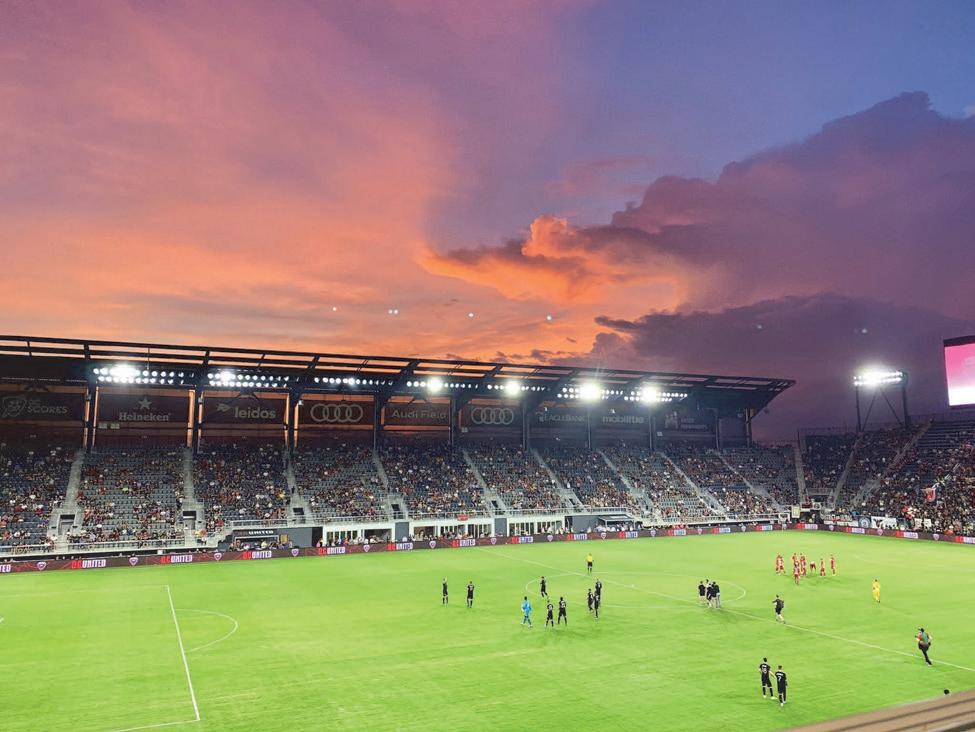



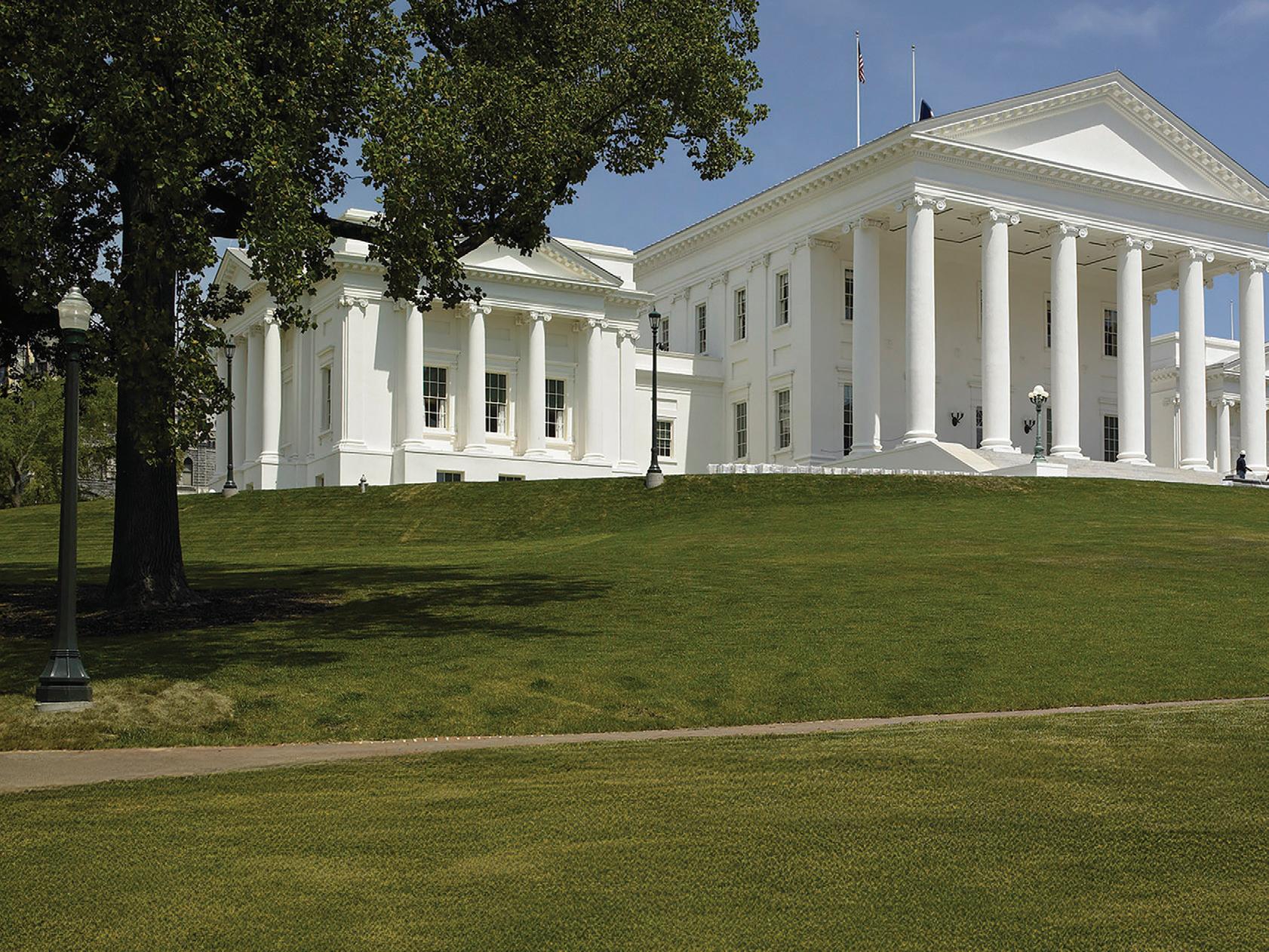
Virginia Legislative News
By Beck Stanley, Legislative Consultant, Rural Results Public Affairs
Virginia Turfgrass Council staff have been busy throughout the summer meeting with legislators and monitoring the state’s Governor, Lt. Governor, Attorney General, and House of Delegates elections. Virginia being the first major statewide political contest following the 2024 presidential election, all eyes are on the Commonwealth. The VTC is hard at work on your behalf ensuring our industry is well represented in Richmond ahead of next year’s gubernatorial transition and new faces in the House chamber.
As we have seen in the past, we anticipate in 2026 a variety of legislative attempts to undermine our industry’s use of essential pesticide tools. This includes pollinator protection, specific product targeting, and patchwork regulatory (“local decision”) bills. Thankfully, we have earned the trust of several legislators on both sides of the aisle and will continue to work closely with our representatives to defeat these bills as they come in during pre-filing periods in December and early January. Once again, we will join our friends at the Virginia Agribusiness Council for their
legislative banquet in January during the first week of session, and if you’ve never been, you’re missing out.
Just last session, a Republican legislator from rural Virginia attempted to create a mandatory notification period for certain applications under the guise of “pollinator protection.” This bill was swiftly defeated in committee on a 12–1 vote, with the patron being the lone “yes” vote. Nonetheless, he has vowed to bring it back again. We worked alongside several important partner groups including the Virginia Agribusiness Council to defeat this harmful legislation.
On the election front, we are watching all three statewide races and the House of Delegates map. In the governor’s race, current Lt. Governor Winsome Sears is facing off against former Congresswoman Abigail Spanberger; in the Lt. Governor’s race, Sen. Ghazala Hashmi is up against conservative radio host John Reid; and in the Attorney General matchup, we will see former Delegate Jay Jones challenge incumbent Attorney General Jason Miyares.
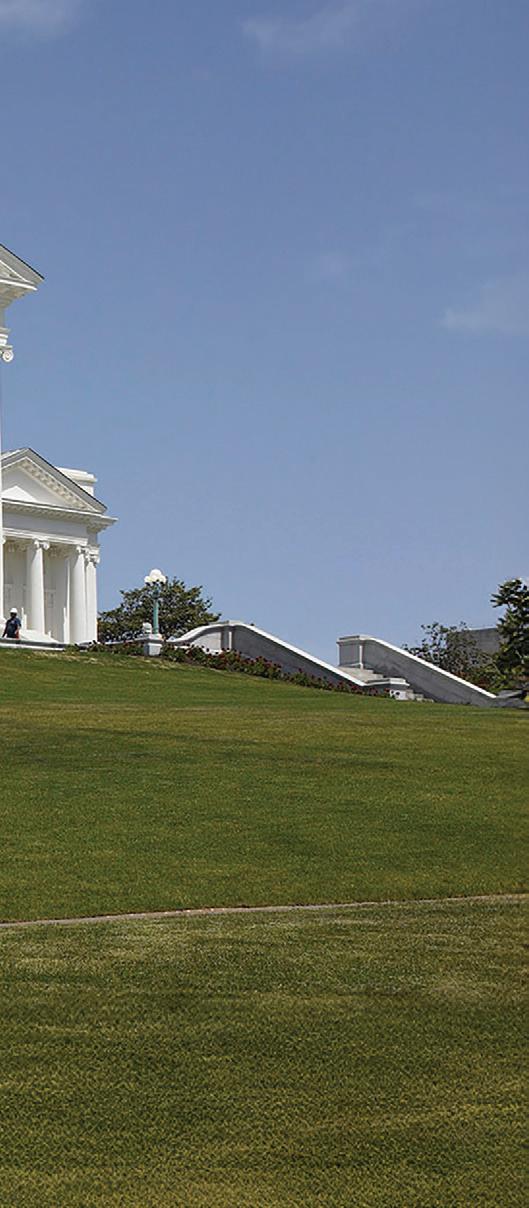

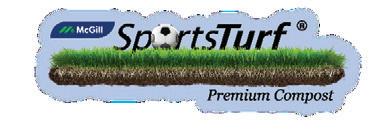
Miyares is outpacing the rest of the GOP ticket on fundraising, and polls are showing summer leads for all three Democratic nominees. In the House of Delegates, Speaker Don Scott is looking to increase his majority, with 10–12 races competitive on the new map drawn following census delays due to COVID-19. The full State Senate will not be up for election until 2027.
As always, our door is always open should you run into issues at the local level, too. Our contract lobbyist, Beck Stanley, can be reached via cell at 540871-9001.
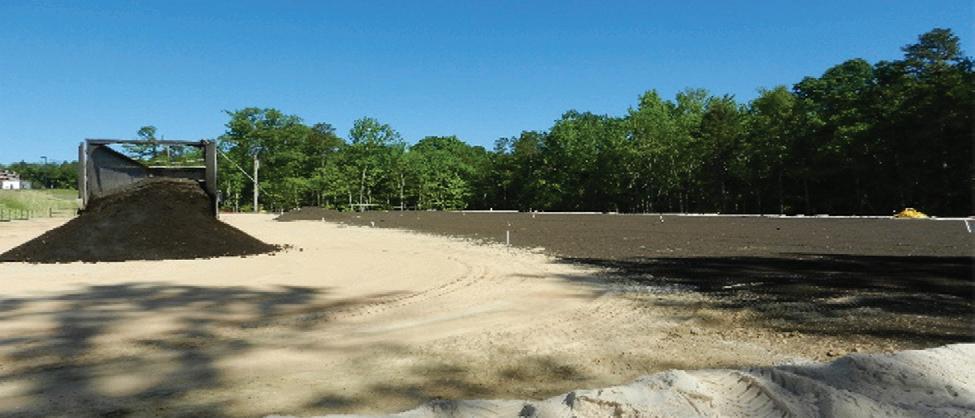







What’s New with
WETTING AGENTS
By Michael Fidanza, Ph.D., Stan Kostka, Ph.D., and Tom Malehorn
oil surfactants are commonly called “wetting agents” in the turfgrass industry, and there are many, many wetting agent products in today’s turf market. In 2012, the USGA Green Section article — Understanding the different wetting agent chemistries — advanced our understanding of these products in a logical manner. Another good article on wetting agents also appeared in the USGA Green Section — Factors to consider when developing a wetting agent program. Both of those articles and more can be found at: https://tinyurl.com/4f2v8m8r Recently, wetting agent categories were proposed in a further attempt help the end user understand their chemical properties: https://tinyurl.com/ywyexm4x
Overall, in golf course and sports turf management, wetting agents are employed to improve infiltration, mitigate water repellency (i.e., hydrophobic conditions), and enhance hydration in soils and rootzones. Wetting agents also are useful for enhancing certain soil directed pesticides, improving flushing of excess salts, indirectly helping turf survive the winter, and improving spring green-up and recovery.
Retainers versus Penetrants?
The marketing of some wetting agent products can lead one to believe there is precise knowledge of clearly definable modes-ofaction, that specific desired outcomes under diverse environmental conditions can prescribe how and when they should be applied, that soil responses can be turned on and off simply by changing what product is applied, or that product “X” can dramatically influence a specific turfgrass surface condition or expectation.
These sorts of questions have only been researched on a handful of products. Researchers at the University of Arkansas, University of Wisconsin, Michigan State University, and the University of Wageningen (Netherlands) have demonstrated that certain wetting agents can increase soil water content under droughty conditions, and lower soil water content during periods of excessive rainfall. Keep-in-mind, most of these results come from turf growing on sand or sandy loam rootzones. Does this mean those wetting agents tested are physically “holding onto” (retaining) water in the rootzone, or “pushing” (penetrating) water through the rootzone? Our soil
physics colleagues would question that statement. The terms retainer and penetrant are not listed in the soil science terminology, but these terms are used to market wetting agents.
Data remain lacking on the nature and differentiation of products sold as “wetters”, “water retainers”, and “penetrants”. There are many claims based on reports-from-the-field or on misperceptions or misinterpretations of visual observations. When considering a wetting agent ask for thorough, documented, replicated field research (either from university or industry researchers). A recent article in the USGA Green Section provides further insight into this topic:
O’Brien, D., Fidanza, M., Kostka, S., and Richardson, M. 2023. Penetrants vs. Retainers: Understanding Wetting Agent Clamins and the Science Behind them. USGA Green Section Record. https://www.usga.org/content/usga/home-page/course-care/ green-section-record/61/issue-10/penetrants-vs--retainers-understanding-wetting-agent-claims-and.html
Over the past two decades, wetting agents have moved from products applied to correct localized dry spots to broader applications in water management, however, marketing claims often outpace the science. Research continues to build upon our understanding of what wetting agents can and cannot do. Understanding the mode-of-action, effects on soil physical phenomena, and effects on soil biology and rhizosphere dynamics are the future. A foundation is being built to support science-based uses of these unique soil amendment compounds.
Conclusion
• Soil surfactants or “wetting agents” lead the way for sustainable water use and water conservation practices on U.S. golf courses.
• Recent research has quantified beneficial effects of using wetting agents, with more work in progress.
• The marketing terms “retainer” and “penetrant” are not soil science terms.
• Ask to see research-based information when considering a wetting agent product.
• Research efforts are underway in the U.S. and Europe that will increase our understanding of how wetting agents affect turf rootzone physical, chemical, and biological properties.
Dr. Mike Fidanza (maf100@psu.edu) is a Professor of Plant and Soil Science at the Berks Campus, Pennsylvania State University, Reading, PA; Dr. Stan Kostka (stan.kostka@gmail.com) is a Visiting Scholar at Penn State Berks Campus; Tom Malehorn (intlturf@gmail.com) is a Penn State turf alum and principal scientist with iGin Research, in Westminster, MD.
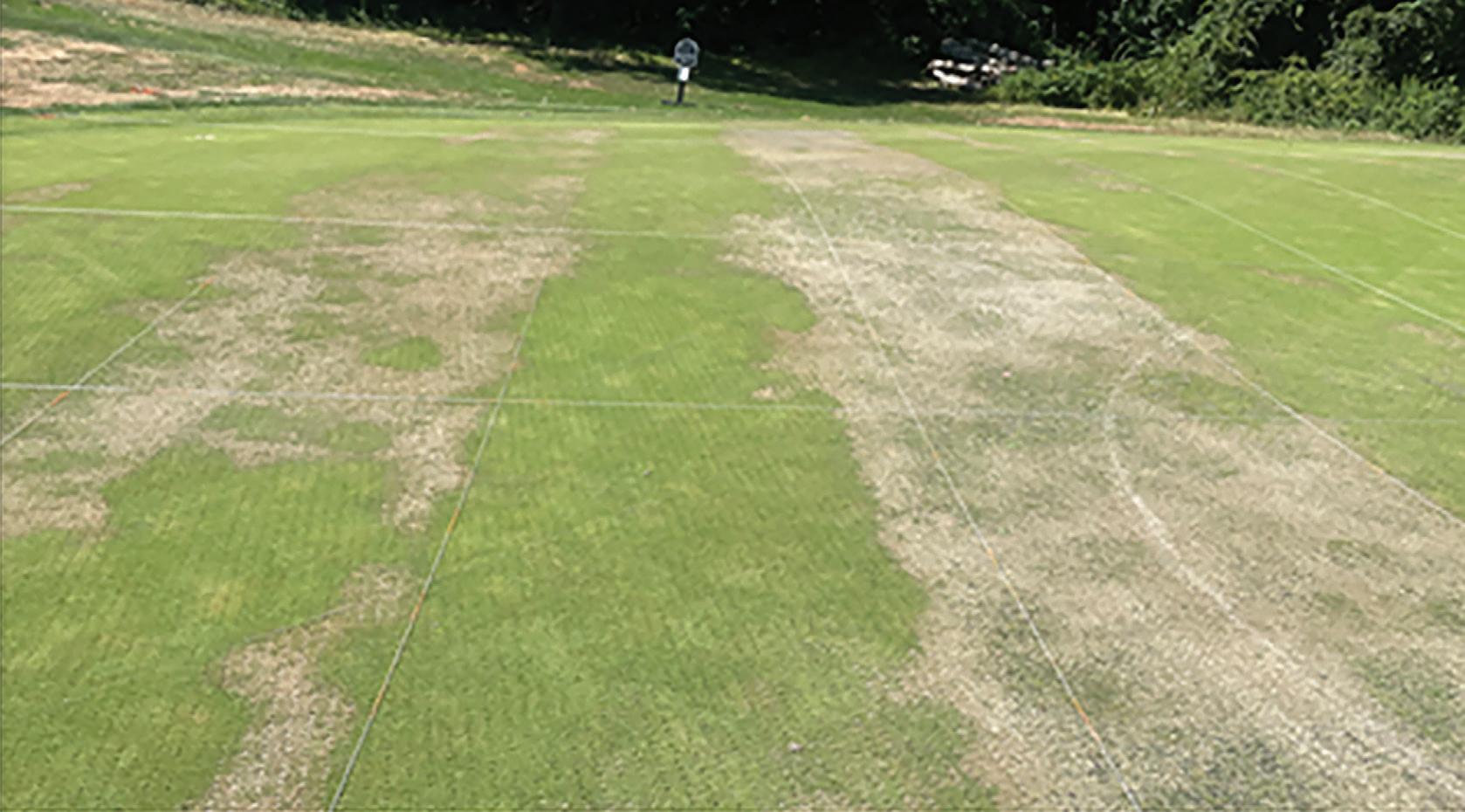
Example of a wetting agent field evaluation study on a creeping bentgrass (Agrostis stolonifera ‘L-93’) practice putting green at Mountain Branch Golf Club (Joppatowne, MD). Wetting agent treatments were applied from April through October, 2023. ‘Other’ was applied at 1.5 fl oz/1000 ft2 every 14 days starting in April; Excalibur® was first applied at 4 fl oz/1000 ft2 in April, followed-by 3 fl oz/1000 ft2 every 28 days. From soil evaluations in August, water infiltration into the rootzone profile is indicated by the blue dye. Source: iGin Research.
